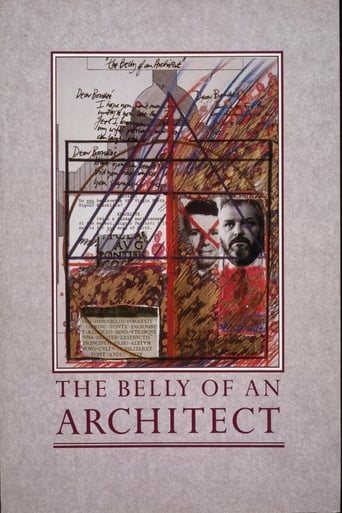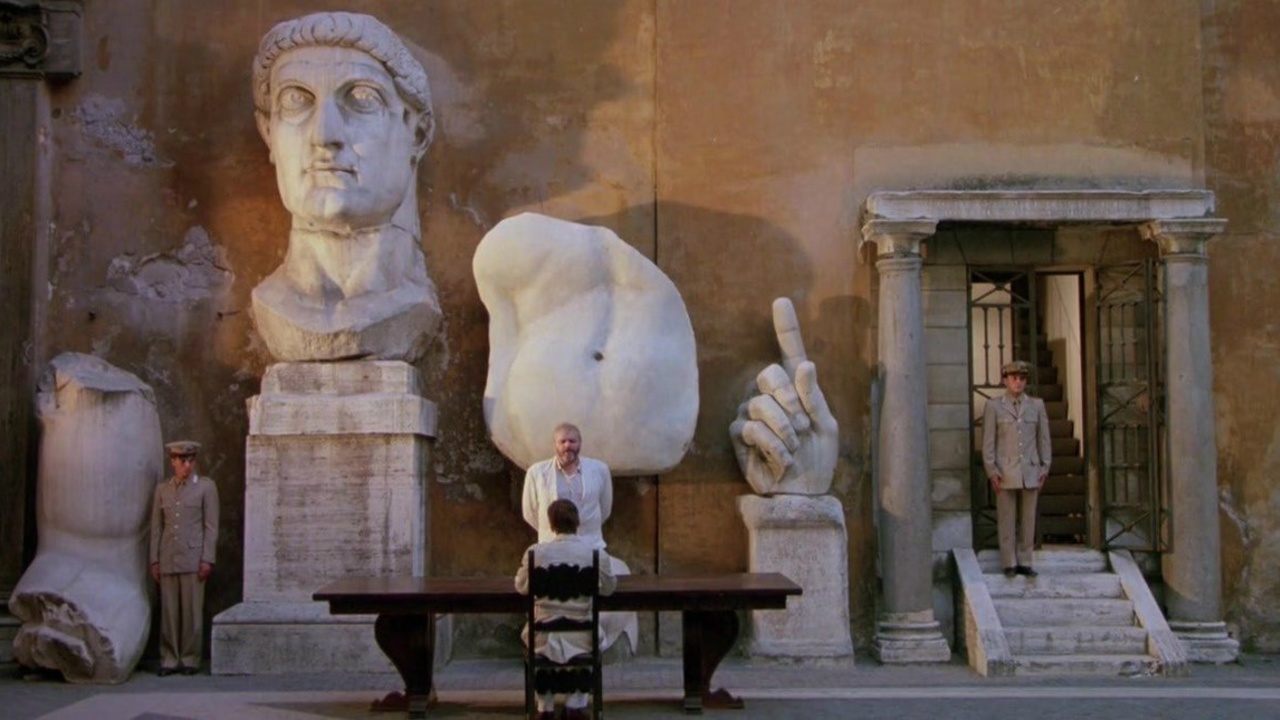oOgiandujaOo_and_Eddy_Merckx
It was a shock for me to discover having watched several of Peter Greenaway's films, and having loved many, that this for me, is easily his best from what I've seen. I will temper that by saying that I saw this in the cinema, and the cinema does wonders for many films. I find Greenaway's Baby of Macon, for example, has too much detail and visual complexity to be particularly accessible via home viewing. Greenaway has indeed been criticised for an overly painterly approach to detail in his films, which some deem not fit for a medium with a moving image. His long time collaborator cinematographer Sacha Vierny for example considered Prospero's Books a failure for the over-cluttering with visual detail that was cinematically indigestible.The late Sacha Vierny doesn't get talked about nearly enough, other than Belly and most of the famous Greenaway films, he shot Last Year in Marienbad for Resnais, as well as the majority of the famous pre-80s Resnais movies; The Three Crowns of the Sailor, amongst others for Ruiz; Bof Anatomie d'un Livreur for Faraldo, a marvellous though little seen film; Belle de Jour for Bunuel; La Femme Publique and others for Zulawski; as well as collaborations with Chris Marker, Maguerite Duras, and Sally Potter. The critical part he played in these great movies is rarely sung. As Vierny was not interested in fame and rarely gave interviews, how much direction he took and how much of his own artistry he plyed will forever remain an enigma. As with most of this work, The Belly of An Architect is a really great looking film.The story of this film is about an architect played by Brian Dennehy, called Stourley Kracklite, if you can believe such an indigestible name, hinting at gastric stagnancy and duodenal eructations. In consonancy with his name, he spends the movie plagued by sluggish prickly guts. Kracklite has always admired an obscure 18th century French architect called Étienne-Louis Boullée, a real-life architect who was famous more for his astonishing designs than for actual won commissions (this has often been a hazard for architects I believe). Make good use of the internet or your library and look up his magnificently insane design for Newton's tomb, which was never taken up, or his sprawling design for the Bibliothque Nationale. Due to his overreaching ambition he therefore ended up making mostly private homes, and there's only a handful of his built projects left in existence.So Kracklite has finished with making his own buildings, and spent the last ten years of his life planning an exhibition on Boullée to be held in Rome. There are a lot of typical Greenaway features here, obsession with food, cuckoldry, a battle between an older and younger man. Somehow Greenaway managed here to take his usual stuff beyond an academic game to a place where there is mythos, and poesy. Greenaway for me is a director with a deep feeling for lifecycle, he doesn't present children as small adults, or middle aged men as ephebes with jowls and paunches.For me it's a film about lifecycle and meaning, and homage to genius. I just adore it.
fedor8
One of Greenaway's most accessible movies, TBOAA has an actual story-line (unlike the unwatchable "Prospero's Books"), and we actually get to see the faces of the actors (as opposed to "The Cook, The Thief, Some Cannibalism & Plenty Of Shouting from Gambon"). We are fortunately spared Greenaway's trademark set-ups in which all the protagonists are approximately 12 miles away from the camera lens, while rhythmic, monotonous classical music accompanies their every distant move.I didn't find the movie particularly stunning visually, I have no idea what fans of this movie are talking about when they praise the sets and the photography. You can see shots like this in any National Geographic documentary about Ancient Rome or the city's museums and architecture. Greenaway occasionally sets up scenes in an effective way, certainly managing to get the maximum out of the rather thin plot, but there is little here that deserves utterances of "wow!". Let's not get over-excited here, people, just because the movie was made by a man who is considered avant-garde and whom it is hence forbidden to criticize too much (an unwritten rule in the hypothetical "Movie Buff's Guide Of Pretentious European Movies").This is close to a 2-hour movie, and yet very little unfolds. Dennehy predictably gets cheated by his ugly wife, gets ill, has a brief and predictable fling with the sister of the guy who is screwing his wife, and then kills himself at the end. His death coincides with the birth of his child, and we see Boulee's year of death right above his dead body. Frankly, that kind of "symbolism" never gets me too excited. Dennehy's obsession with bellies and Boulee may hold some mysterious grip on Greenaway, and maybe some of his more rabid followers as well, but it doesn't exactly offer anything of significance or even "depth". Tossing historical, architectural, and art references left and right does not a great movie make. Again, I can get all that information on the internet, by watching a documentary, or reading. Not that I was annoyed by that, but it boggles the mind why some film fans wet their pants over this kind of thing.It was predictable that at least one of the main three characters would die at the end. I was even a bit surprised that there wasn't more tragedy happening, with perhaps a scuffle, knives stabbing bellies, people losing their noses, heads rolling into bins... Greenaway never shied away from bombastic conclusions. Suicide, rape, or murder, how else could the movie end? Greenaway was fortunate to have had someone like Dennehy, because quite frankly the rest of the cast was miserably uninteresting and flat.This brings me to my main criticism. Dennehy comes to Italy - not Mars - and yet the behaviour that he encounters is that of a bunch of very rude, stone-faced, evil Romans that seem to have been shipped straight from planet Greenaway to our little Earth. Whether the director has something concrete against the Italian people, or whether he was just being typically "weird" in the worst European-cinema tradition, I don't know. The interaction between the American guest and the Italians is usually illogical, sometimes strange, and often just plain silly. An example of the latter would be the way Dennehy punches some brash young Italians on two occasions. If you wanna be "weeeeeird", then be weird all the way, instead of creating a movie that remains undecided whether it wants to be realistic or all-out experimental.
Galina
Dreamlike, beautifully shot by great Sasha Vernie and equally disturbing (as all Greenaway's movies are), "The Belly of an Architect" (1987) tells the story of an American architect, Stourley Kracklite (Brian Dennehy) who came to Rome to work on the exhibition dedicated to the French architect of the 18th century, Etienne-Louis Boullee (1728 - 1799). Stourley brings with him his much younger wife Louisa with whom is passionately in love. Everything looks good for him he's got a project of his dreams to work on, his wife is with him, and his Italian colleagues seem to be supportive and exited about the exhibit as much as he is. Soon, though, the things begin to change and look rather grim Stourley's pregnant wife enters the affair with a younger man, the work does not move as quickly as it was planned and on the top of all, Stourley gets sick and perhaps more seriously than he thinks.When I watch Peter Greenaway's films, I know they will be a feast for brain, eyes, and ears his films consist of frames so perfectly composed that you want to capture every moment of them and exclaim like Goethe's Faust did, "Stay a while! You are so lovely!". The music in his films matches the visual beauty perfectly, and his outlook at the familiar world is always original and arresting even if it lacks warmth and sentimentality. "The Belly of an Architect" is all that: it is filled with symbolism and references to history, Art, and anatomy. It is also a social satire on difference between cultures but it is a compelling and moving story of one man's descending to chaos, hopelessness, despair, and eventually death. This is the first Greenaway's movie since "The cook, The Thief, His Wife, and Her Lover" that made me feel compassion for its protagonist. I believe it is due to the incredible performance by Brian Dennehy - quite unusual name for a Greenaway's film but was he great as the architect of the title. Dennehy creates a character that is not likable as the film begins but heartbreaking and tragic by the end.8/10
severin72
Greenaway's visuals (which betray his origins as a painter in almost every gorgeously composed shot) are sumptuous. Wim Mertens score is mesmerizing. Add them to Brian Dennehy's towering performance as obsessed, betrayed, and ultimately dying American architect Stourley Kracklite and you have something very special. Kracklite is in Rome battling to put on an exhibition to his idol, 18th century French architect Etienne Louis Boulet. His young wife (Webb) betrays him, the natives scheme to undermine his exhibition and he begins to crumble physically like the ruins of the eternal city around him. The story, largely carried on Dennehy's massive shoulders, is almost incidental to the glorious, poetic footage of Rome. It is so movingly beautiful that, when I finally got around to visiting the city (a trip in no small part inspired by this film) the reality of the place couldn't compete. If you can, watch this on a big screen with the best possible suround-sound. If you can't, watch it anyway.


 AD
AD




